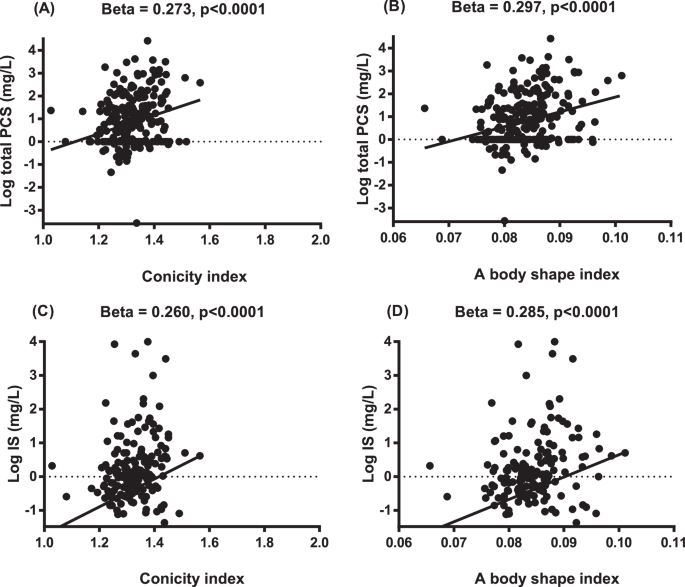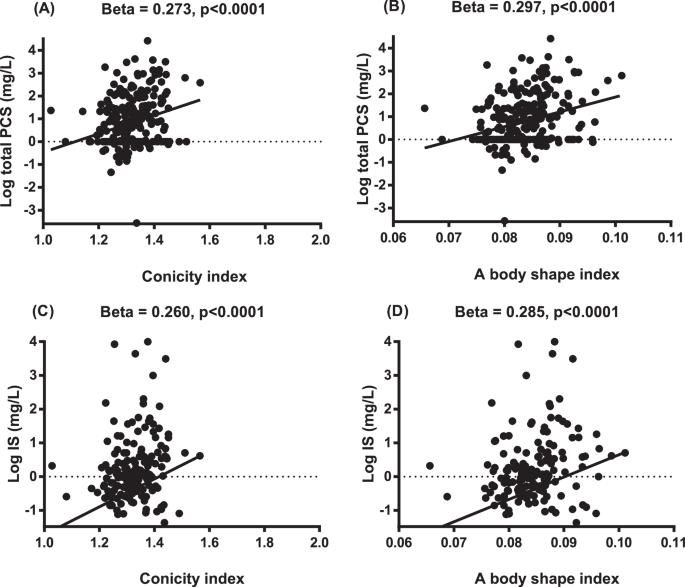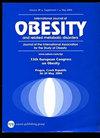Associations of circulating total p-cresylsulfate and indoxyl sulfate concentrations with central obesity in patients with stable coronary artery disease: sex-specific insights
IF 4.2
2区 医学
Q1 ENDOCRINOLOGY & METABOLISM
引用次数: 0
Abstract
Elevated systemic inflammation, common in obesity, increases cardiovascular disease risk. Obesity is linked to a pro-inflammatory gut microbiota that releases uremic toxins like p-cresylsulfate (PCS) and indoxyl sulfate (IS), which are implicated in coronary atherosclerosis, insulin resistance, and chronic kidney disease. This study examines the relationship between total PCS and IS levels and central obesity in patients with stable coronary artery disease (CAD). A cross-sectional study was conducted on 373 consecutive patients with stable CAD from a single center. Serum levels of total PCS and IS were measured using an Ultra Performance LC System. Central obesity was evaluated using a body shape index (ABSI) and conicity index (CI). Six obesity-related proteins were also analyzed. Structural equation modeling (SEM) assessed direct and indirect effects of total PCS, IS, and the six obesity-related proteins on central obesity. Significant positive correlations were found between total PCS and IS with waist-to-hip ratio (WHR) (r = 0.174, p = 0.005 for total PCS; r = 0.144, p = 0.021 for IS), CI (r = 0.273, p < 0.0001 for total PCS; r = 0.260, p < 0.0001 for IS), and ABSI (r = 0.297, p < 0.0001 for total PCS; r = 0.285, p < 0.0001 for IS) in male patients, but not in female patients. Multivariate analysis showed higher odds ratios (ORs) for elevated CI (OR = 3.18, 95% CI: 1.54–6.75, p = 0.002) and ABSI (OR = 3.28, 95% CI: 1.54–7.24, p = 0.002) in patients with high PCS levels, and elevated CI (OR = 2.30, 95% CI: 1.15–4.66, p = 0.018) and ABSI (OR = 2.22, 95% CI: 1.07–4.72, p = 0.033) in those with high IS levels, compared to those with low toxin levels. SEM analysis indicated that total PCS and IS directly impacted central obesity indices and indirectly influenced central adiposity measures like WHR through high sensitivity C-reactive protein (hs-CRP) (β = 0.252, p < 0.001). Circulating total PCS and IS contribute to central obesity in male patients with stable CAD, partially mediated by hs-CRP.


稳定型冠心病患者循环中总对甲酚硫酸盐和吲哚硫酸盐浓度与中心性肥胖的关系:性别特异性见解。
背景/目的:肥胖常见的全身性炎症会增加心血管疾病风险。肥胖与促炎性肠道微生物群有关,这种微生物群会释放尿毒症毒素,如对甲酚硫酸盐(PCS)和吲哚硫酸盐(IS),而这些毒素与冠状动脉粥样硬化、胰岛素抵抗和慢性肾脏疾病有关。本研究探讨了稳定型冠状动脉疾病(CAD)患者的总 PCS 和 IS 水平与中心性肥胖之间的关系:方法:一项横断面研究针对一个中心的 373 名连续稳定型冠状动脉疾病患者。使用超高效液相色谱系统测量血清总PCS和IS水平。中心性肥胖采用体形指数(ABSI)和圆锥指数(CI)进行评估。此外,还分析了六种与肥胖相关的蛋白质。结构方程模型(SEM)评估了总 PCS、IS 和六种肥胖相关蛋白质对中心性肥胖的直接和间接影响:结果:发现总 PCS 和 IS 与腰臀比(WHR)(总 PCS 的 r = 0.174,p = 0.005;IS 的 r = 0.144,p = 0.021)、CI(r = 0.273,p 结论:总 PCS 和 IS 与腰臀比(WHR)和 CI 之间存在显著的正相关:血液循环中的总 PCS 和 IS 会导致患有稳定型冠状动脉粥样硬化症的男性患者出现中心性肥胖,部分原因在于 hs-CRP。
本文章由计算机程序翻译,如有差异,请以英文原文为准。
求助全文
约1分钟内获得全文
求助全文
来源期刊

International Journal of Obesity
医学-内分泌学与代谢
CiteScore
10.00
自引率
2.00%
发文量
221
审稿时长
3 months
期刊介绍:
The International Journal of Obesity is a multi-disciplinary forum for research describing basic, clinical and applied studies in biochemistry, physiology, genetics and nutrition, molecular, metabolic, psychological and epidemiological aspects of obesity and related disorders.
We publish a range of content types including original research articles, technical reports, reviews, correspondence and brief communications that elaborate on significant advances in the field and cover topical issues.
 求助内容:
求助内容: 应助结果提醒方式:
应助结果提醒方式:


